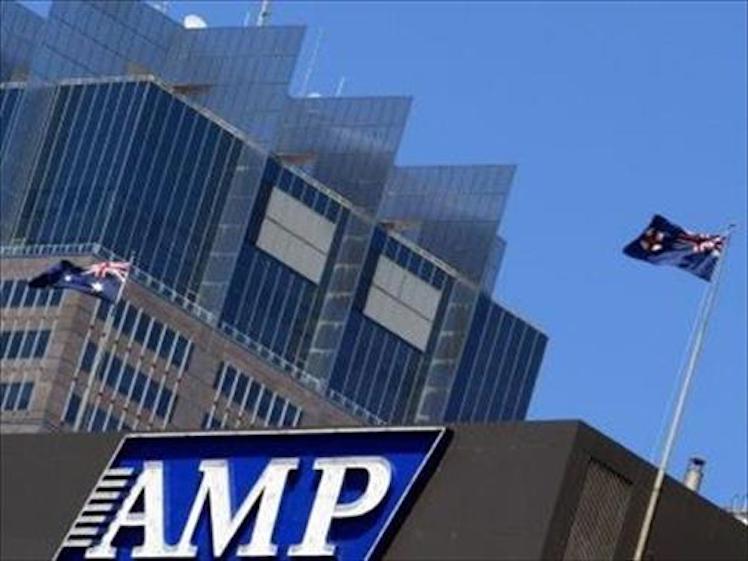Will US regulators step in and take action against AMP as they did against Rio Tinto? As the financial services scandal deepens, claiming the scalp of AMP chief executive Craig Meller this morning, regulatory activist and former Top 50 company executive Phillip Sweeney compares the cases of Rio and AMP, argues AMP executives committed worse crimes and asks whether Australian regulators have the bottle to take the sort of decisive action taken by their overseas counterparts.
From AMP’s shocking admissions to the Royal Commission on Tuesday, we now know that senior executives at the investment institution set out to rob their own customers by charging for services which were never provided and then lied multiple times to the conduct regulator, the Australian Securities and Investment Commission (ASIC), in order to cover-up this “misconduct”.
The deception included the Board’s deliberate tampering of Clayton Utz’s report – a supposed “independent” investigation of this “misconduct” – which was then provided to ASIC. In a bid to save her own job, Chair, Catherine Brenner, fast-forwarded CEO Craig Mellor’s resignation (originally due end 2018) by announcing he would be stepping down immediately. But such has been the brand damage, it’s hard to see that she’ll survive.
This begs the question of what the regulatory response of ASIC will be to this disgraceful conduct.
Going on past history — not much.
ASIC has been described as a “timid” regulator unwilling to take on the Big End of Town financial institutions such as AMP, unless forced to do so by media and political pressure.
#ASIC: timid, hesitant regulator, too ready and willing to accept uncritically the assurances of a large institution. https://t.co/7ltgDtEwjm
— Dr Koh Whistleblower (@drkohComminsure) March 26, 2017
It is instructive to examine ASIC’s response to “misconduct” by former senior executives of Rio Tinto which is jointly listed on both the London and Australian stock exchanges. Rio Tinto also trades on the New York Stock Exchange as an American Depository Receipt (ADR).
Rio Tinto is subject to regulation by the UK Financial Conduct Authority, the US Securities & Exchange Commission (SEC) and by ASIC.
The company’s senior executives did not set out to rob anyone. But they made a bad investment decision when they launched a hostile takeover for Riversdale Mining, whose main asset – a coal deposit in Mozambique – turned out to be a dud. Rio Tinto purchased the Mozambique coal assets for $3.7bn in 2011 and sold them at a huge loss for $50m three years later.
As a listed company Rio Tinto is subject to continuous disclosure obligations in the markets were its shares are traded.
These obligations require the company to promptly disclose information to investors that may have a material impact on the company’s share price. The former senior executives at Rio Tinto failed to comply with established procedures and failed to promptly reveal to investors and the public the true picture of Riversdale Mining.
The UK Financial Conduct Authority fined Rio Tinto £27 million for breaching disclosure and transparency rules that apply to companies listed on the London Stock Exchange.
The US SEC laid criminal charges alleging that Rio’s former CEO, Tom Albanese, and Chief Financial Officer, Guy Elliott, each violated antifraud, reporting and internal control provisions of the Securities Exchange Act of 1934 (“Exchange Act”) and the Securities Act of 1933 (“Securities Act”).
FULL STORY: US regulator charges mining group Rio Tinto (and former CEO and CFO) with fraud — via @David_Stringer https://t.co/EaEHWyReF7
— Javier Blas (@JavierBlas) October 17, 2017
AMP’s excuse provided to the Royal Commission by a senior manager was that AMP had put the interest of its shareholders before the interest of its customers (clients).
It should be remembered that AMP was established in 1849 as the Australian Mutual Provident Society as a non-profit insurance company and mutual society. Managers then were rewarded according to how well they looked after the interests of the members of the society.
However, a major cultural change occurred in 1998 when the Australian Mutual Provident Society was demutualised into an Australian public company and listed on the Australia Stock Exchange (ASX) as AMP Limited.
From then on, senior executives were rewarded for how well they looked after the interest of shareholders. The original shareholders were the fund members. However, today, small shareholdings only account for 8 per cent of the shares on issue with the top 20 shareholders, other large financial institutions, accounting for 62 per cent of shares on issue.
The senior managers and the Board of AMP put the interest of these large financial institutions before the interests of its customers.
When the senior executives of Rio Tinto breached the continuous disclosure obligations, the UK Financial Conduct Authority took strong regulatory action, which was then followed by the US SEC.
It was only after ASIC was questioned by a Senate Committee that ASIC, the “timid” regulator, belatedly took regulatory action in Australia.
AMP also trades as an ADR* on the New York Stock Exchange (Ticker AMLYY).
It is clear that the “misconduct” of the senior executives of AMP is far worse than the “misconduct” of the senior executives of Rio Tinto and the revelation of this misconduct by the Royal Commission had a material effect on the share price of AMP shares.
So will the US SEC now take similar regulatory action against the senior executives of AMP as it did with the senior executives of Rio Tinto?
More to the point, will it take questioning by another Senate Committee before ASIC takes regulatory action against the senior executives of AMP for this disgraceful and deliberate misconduct?
With the benefit of hindsight, who were the winners out of the decision to demutualise the Australian Mutual Provident Society? It certainly isn’t the current customers (clients) of AMP.
*Editor’s Note:
——————
Phillip Sweeney is a former senior executive of a Top 50 Australian company, previously listed on the ASX. He was involved in government and industry relations and tax.

